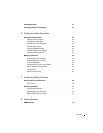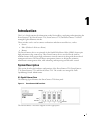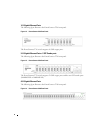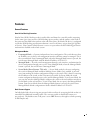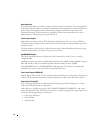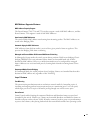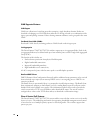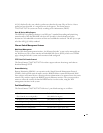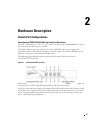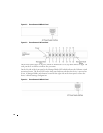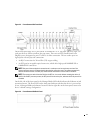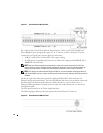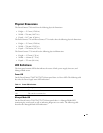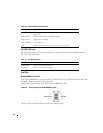
13
A CoS is defined by the user, whereby packets are related to the same Class of Service. After a
packet has been classified, it is assigned to one of the queues. The PowerConnect
2708/2716/2724
/2748
system can classify according to IPv4 information (DSCP).
Class Of Service 802.1p Support
The IEEE 802.1p signaling technique is an OSI Layer 2 standard for marking and prioritizing
network traffic at the data link/MAC sub-layer. 802.1p traffic is classified and sent to the
destination. No bandwidth reservations or limits are established or enforced. The 802.1p is a spin-
off of the 802.1Q (VLANs) standard.
Ethernet Switch Management Features
Web-Based Management
With a Web-based management interface, the Ethernet Switches’ system can be managed from
any Web browser. The system contains an Embedded Web Server (EWS), which serves HTML
pages, through which the system can be monitored and configured.
TFTP Trivial File Transfer Protocol
The PowerConnect 2708/2716/2724
/2748
switches support software boot image and software
download through TFTP.
Remote Monitoring
Remote Monitoring
(RMON) is an extension to the Simple Network Management Protocol
(SNMP), which provides network traffic
statistics. RMON defines current and historical MAC-
layer statistics and control objects, allowing real-time information to be captured across the entire
network. The switches support one RMON group for Ethernet statistics. The system provides a
means to collect the statistics defined in RMON and to view the results, using the Web
management interface in the system.
Port Default Settings
The PowerConnect 2708/2716/2724
/2748
devices’s port default settings are as follows:
Function Default Setting
Flow Control (user-configurable) Off (disabled on ingress)
Backpressure (user-configurable) Off (disabled on ingress)
Auto Negotiation Speed (user-configurable) Enabled (1000 Mbps)
Auto Negotiation Duplex (user-configurable) Enabled (Full Duplex)
MDIX (not user-configurable) On (relevant to copper ports only)



